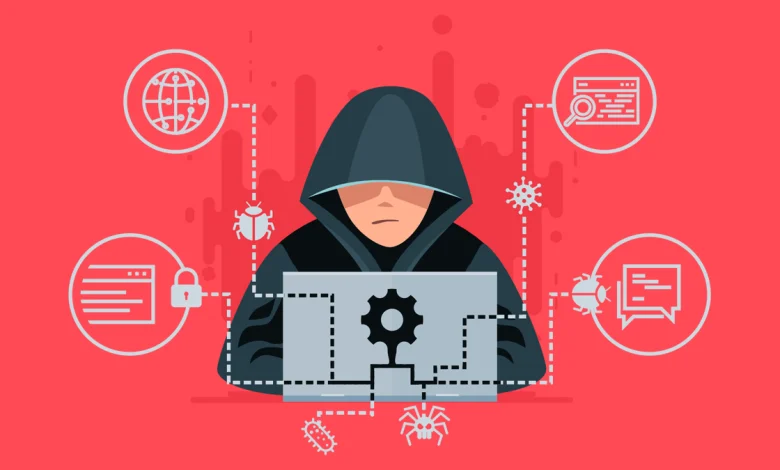Fortifying Your System: A Comprehensive Guide to Anti-Rootkit Protection

Introduction
In the ever-evolving landscape of cybersecurity, one of the most insidious threats that can compromise your system’s integrity is a rootkit. Rootkits are clandestine pieces of software designed to conceal malicious activities, providing unauthorized access to a computer or network. The realm of anti rootkit protection, exploring what rootkits are, their potential impact, and, most importantly, how you can fortify your system against these stealthy threats.
The Dangers of Rootkit Infections
The consequences of a rootkit infection can be severe. Not only do rootkits compromise the confidentiality and integrity of sensitive information, but they can also serve as a launchpad for other malware and cyber-attacks. Rootkits may remain dormant for extended periods, silently collecting data or waiting for the opportune moment to strike. This makes them particularly dangerous, as their activities often go unnoticed until the damage is already done.
The Evolving Tactics of Rootkits
Rootkits have evolved over the years, adapting to counteract advances in cybersecurity. Kernel-mode rootkits, for instance, operate at the deepest levels of an operating system, making them exceptionally challenging to detect. User-mode rootkits, on the other hand, stay within the user’s space, making them somewhat easier to identify but still capable of evading traditional security measures.
Key components to build an Anti-Rootkit Arsenal
To safeguard your system from rootkit threats, a multi-layered defense strategy is crucial.
1. Reliable Antivirus Software: The First Line of Defense
Invest in reputable antivirus software that includes robust rootkit detection capabilities. Regularly update the antivirus signatures to ensure the detection database is current. Additionally, enables real-time scanning to promptly identify and quarantine potential threats.
2. Anti-Malware Tools: Strengthening the Perimeter
Supplement your antivirus solution with dedicated anti-malware tools. These tools are designed to detect and remove a broader range of malicious software, including rootkits. Regularly scan your system with these tools to uncover any hidden threats that may have slipped past your primary defenses.
3. Rootkit Scanners: Specialized Detection
Consider employing specialized rootkit scanners. These tools are designed specifically to identify and remove rootkits by delving into the deepest layers of your system. Run these scans regularly, especially after significant system changes or updates, to maintain a vigilant defense against evolving rootkit threats.
4. System Integrity Checks: Monitoring for Anomalies
Implement system integrity checks to monitor critical files, registry entries, and system configurations. Any unexpected changes could indicate the presence of a rootkit. Automated tools can periodically verify the integrity of these elements, providing an additional layer of defense against stealthy attacks.
5. Network Security Measures: Fortifying the Perimeter
Since rootkits can also infiltrate systems through network vulnerabilities, invest in robust network security measures. Firewalls, intrusion detection systems (IDS), and regularly updated routers contribute to a secure network environment, reducing the likelihood of rootkit infiltration.
Best Practices for Prevention of rootkit infections
While having effective anti-rootkit tools is essential, adopting proactive practices can further enhance your system’s resilience against these threats.
1. Regular Software Updates: Closing Security Loopholes
Keep your operating system, applications, and security software up to date. Developers frequently release patches to address vulnerabilities that could be exploited by rootkits. Regular updates ensure that your system is fortified against known threats.
2. User Awareness: The Human Firewall
Educate users about the risks of downloading software from untrusted sources or clicking on suspicious links. Social engineering is a common tactic employed by rootkit attack to introduce rootkits into systems. A vigilant user is an invaluable line of defense.
3. Least Privilege Principle: Restricting Access
Follow the principle of least privilege by granting users only the permissions necessary for their tasks. This limits the impact of a potential rootkit infection, as the malicious software would have restricted access to critical system functions.
Emerging Technologies in Anti-Rootkit Protection
As the threat landscape continues to evolve, so do the technologies aimed at thwarting rootkits.
1. Behavioral Analysis: Identifying Anomalies
Behavioral analysis tools monitor system behavior, looking for deviations from normal patterns. By identifying suspicious activities, these tools can detect and block rootkits based on their behavior rather than relying solely on signature-based detection.
2. Hardware-Assisted Security: Adding a Layer of Protection
Hardware-assisted security features, such as those found in modern CPUs, provide an additional layer of protection against rootkits. These features include secure boot processes and memory protections that make it harder for malicious software to compromise the system at a low level.
3. Machine Learning and AI: Adaptive Defenses
Machine learning algorithms and artificial intelligence (AI) are increasingly being integrated into security solutions. These technologies can adapt and learn from new threats, improving the accuracy and efficiency of rootkit detection.
Incident Response and Recovery Strategies
Despite the best preventive measures, there is always a possibility of a rootkit slipping through defenses. Therefore, having a well-defined incident response plan is crucial. Establish clear procedures for detecting, containing, eradicating, and recovering from a rootkit infection. This plan should include communication protocols, roles and responsibilities, and steps for system restoration. Regularly test and update your incident response plan to ensure its effectiveness in the face of evolving threats.
Collaboration and Information Sharing
The cybersecurity landscape benefits from collective efforts. Engage with the broader cybersecurity community, share information about emerging threats, and collaborate with industry peers. This collaborative approach can lead to faster identification of new rootkit variants and the development of more effective countermeasures. Stay informed about the latest research, attend conferences, and participate in forums to stay ahead of the curve.
Regulatory Compliance and Security Audits
For organizations handling sensitive data, compliance with industry regulations is non-negotiable. Many regulations mandate specific security measures to protect against data breaches, which often include provisions for anti-rootkit protection. Regular security audits ensure that your systems adhere to these regulations and provide an opportunity to identify and rectify potential vulnerabilities.
User Training and Awareness Programs
Users are often the first line of defense against cyber threats. Conduct regular training sessions to educate users about the dangers of downloading suspicious files, clicking on unknown links, and falling victim to social engineering tactics. Awareness programs empower users to recognize potential threats and report suspicious activities promptly.
Mobile Device Security
In the era of smartphones and tablets, it’s essential to extend anti-rootkit protection to mobile devices. Mobile rootkits can compromise not only the device itself but also the data and networks it connects to. Utilize mobile security solutions that include anti-rootkit capabilities and educate users on secure mobile practices.
Conclusion
Safeguarding your system against rootkit threats requires a holistic and adaptive approach. By combining robust anti-rootkit tools, preventive practices, emerging technologies, and a proactive response strategy, you can significantly enhance your system’s resilience. Stay informed about the evolving threat landscape, collaborate with the cybersecurity community, and continuously update your defenses to stay ahead of malicious actors. In the relentless pursuit of a secure digital environment, your commitment to anti-rootkit protection is a key factor in fortifying the foundations of your cybersecurity posture.





